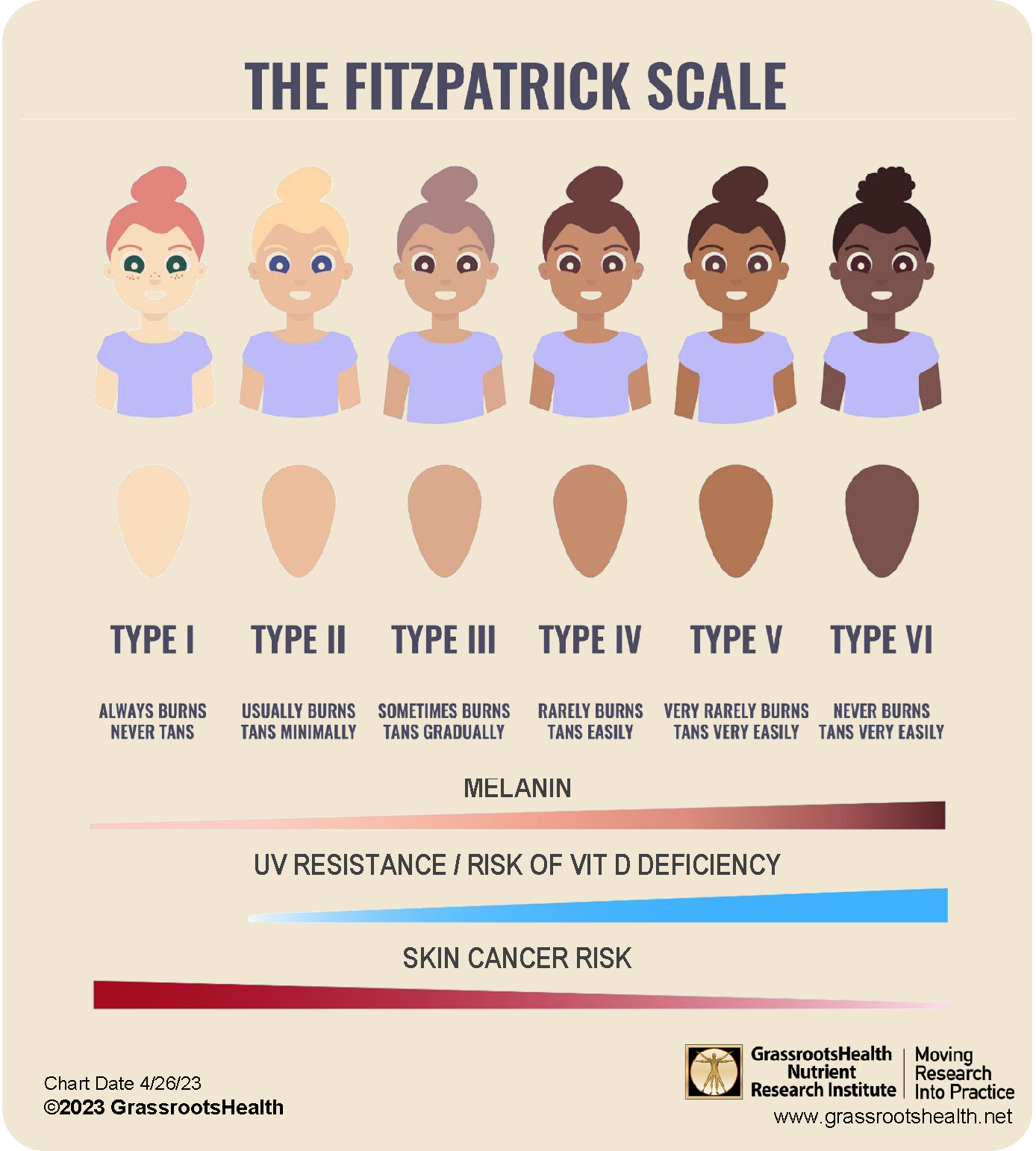Published on May 9, 2023
Tips for safely incorporating sunshine exposure into your routine to produce vitamin D
Key Points
- Developing a personalized plan that incorporates sunshine exposure into your regular routine to maximize the benefits and make vitamin D, while being mindful not to burn, can be easily done when considering the following factors
- If the length of your shadow on the ground is shorter than your height, the sun is high enough in the sky to let UVB rays shine through and reach the ground, and your skin, which is usually mid-day between the hours of 10 am and 2 pm; early morning and early evening, when our shadows are taller than we are, only provide us with UVA sunlight (good for making nitric oxide), not UVB which is necessary for vitamin D production
- Knowing your skin type is essential for personalizing your sun exposure; darker skin contains more melanin, which acts as a natural sunscreen and decreases the likelihood of burns and skin cancer, however, the more melanin skin contains the longer it takes to produce vitamin D
- Read more for additional factors, myths about vitamin D & sunshine, and how to tell if you are getting enough vitamin D
Exposure to sunshine initiates many reactions within the body that affect our health, the most notable of which is vitamin D production. When skin is exposed to UVB radiation from sunshine, without sunscreen, it is able to make vitamin D. The vitamin D that our body makes in the skin upon exposure to UVB has several additional benefits compared to the vitamin D we receive from supplements or diet, including having a role in protecting skin cells from residual UV damage and decreasing the risk of melanoma.
Unfortunately, we are not always able to make vitamin D from sun exposure. Additionally, in today’s modern society, many individuals tend to create their own “vitamin D winter” by staying indoors on hot, sunny days, covering up when outside, or avoiding the sun during peak vitamin D-producing UVB hours (mid-day). This post will outline several important factors to consider when choosing to use sunshine to produce vitamin D, how to be safe with your sunshine routine, and how to know if you are generating enough vitamin D or if a supplement may be needed for additional support.
 Making Vitamin D From the Sun
Making Vitamin D From the Sun
Learn how to make vitamin D from sunshine. The UV index must be above 3, your shadow must be shorter than you and the more skin exposed the more vitamin D you will make. Know your skin and skin type. Don’t burn.
Watch Now
 How does the color of the skin affect vitamin D production?
How does the color of the skin affect vitamin D production?
Those with darker skin (and therefore, more melanin) require more time to be in the sun exposed to UVB than those with lighter skin to make the same amount of vitamin D. Learn more with this interview snippet with Dr. Michael Holick.
Watch Now
 Does sunscreen block vitamin D production?
Does sunscreen block vitamin D production?
Listen in to this snippet of an interview with Dr. Michael Holick as he describes the scientific purpose of sunscreen and if you can still make vitamin D while appropriately applying sunscreen to the skin.
Get These Tips and More in our Sunshine eBook!
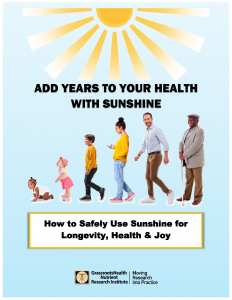 With our FREE Sunshine eBook, you will learn:
With our FREE Sunshine eBook, you will learn:
- the health benefits of sunshine
- what happens in our bodies when exposed to sunshine
- how and when to make vitamin D from sun exposure and how this is different from taking a supplement
- how to utilize sensible sun exposure to minimize the risks of sun exposure and maximize the benefits for skin and overall health
- and more…
Factors Affecting Vitamin D Production from Sun Exposure
When it comes to using sunshine exposure to create vitamin D, it is essential to do so purposefully and mindfully. The potential harms of excessive UV exposure (the kind that results in sunburn) include the increased risk of melanoma and other forms of skin damage, so it is essential to keep in mind the number one rule of safe sun exposure:
Don’t burn!
In fact, when your skin starts to get a sunburn, the ability to make vitamin D breaks down, so you want to avoid sunburns for vitamin D production among other important reasons. Developing a personalized plan that incorporates sunshine exposure into your regular routine to maximize the benefits and make vitamin D, while being mindful not to burn, can be easily done when considering the following factors.
Make Sure the Ultraviolet (UV) Index is Above 3
The ultraviolet (UV) Index is a measurement of the strength of the sun’s UV rays at a particular place and time. An index of 0 occurs at night when there is no UV radiation and an index of 10 corresponds approximately to mid-day summer sunlight without cloud cover (values above 10 can be found in high altitudes, near the Equator, and locations with higher ozone layer depletion).

The UV Index must be over 3 to make vitamin D, however, the UV Index varies tremendously depending on the time of day, time of year, latitude, weather, air pollution, and geographical location.
HINT: Are You Taller than Your Shadow?
While you are outside in the sunshine, look at your shadow. Is it shorter than you are?
If so, there is enough UVB for you to make vitamin D! Check your weather app to make sure the UV Index is above 3, as this is when you’ll really start making vitamin D.
If the length of your shadow on the ground is shorter than your height, the sun is high enough in the sky to let UVB rays shine through and reach the ground, and your skin. This is usually mid-day, between the hours of 10 am and 2 pm. Early morning and early evening, when our shadows are taller than we are, only provide us with UVA sunlight (good for making nitric oxide), not UVB which is necessary for vitamin D production.
Latitude and Season
Vitamin D production is also dependent on latitude and season. Those who live closer to the equator, where the midday sun is high in the sky throughout the year, have the ability to produce vitamin D year-round.
Those who live north of about 34 degrees latitude (approximately Los Angeles, CA, or Atlanta, GA) experience a “vitamin D winter” for some period of time between fall and early spring, when the sun never gets high enough in the sky to enable vitamin D production.
Skin Type and Color
Knowing your skin type is essential for personalizing your sun exposure. Darker skin contains more melanin, which acts as a natural sunscreen. While this decreases the likelihood of burns and skin cancer, the more melanin skin contains the longer it takes to produce vitamin D. For example, a person with skin type VI may require more than 10 times the length of UVB exposure to make the same amount of vitamin D as someone with skin type II.
The Fitzpatrick scale, shown below, classifies six skin types based on their response to UV radiation. The skin type quiz can help you determine your type.
IMPORTANT SUMMARY!
Darker skin = lower risk for skin cancer but higher risk of vitamin D deficiency
Lighter skin = higher tendency to burn, higher risk of skin cancer, yet sun avoidance will require vitamin D supplementation
Clothing and Sunscreen
Skin must be exposed to sunlight without sunscreen or clothing in order to make vitamin D. Greater amounts of vitamin D are made when more skin is exposed, especially the back and shoulders, as these contain the most surface areas on your body. It is better to expose more skin for less time to ensure you do not overexpose yourself and burn. Ideally, skin should be exposed to the sun on a 90-degree angle.
When to Apply Sunscreen?
Since sunscreen blocks the UVB rays needed to produce vitamin D, it should be applied only after the exposure time allotted for making vitamin D. Sunshine expert, Dr. Michael Holick, typically recommends covering up the sensitive parts of the skin (face, top of the hands, ears) but exposing the larger surfaces of the body (arms and legs), without sunscreen, for a reasonable amount of time and without burning to make vitamin D and the other biochemicals resulting from sunshine exposure before covering up.
[People with low risk of skin cancer] are advised to spend sufficient time outdoors with ample skin exposed when the UV index is >3 to obtain a vitamin D-effective dose of UV radiation. Sun protection is not needed unless spending extended time outdoors when the UV index is >3. Neale et al.
Age
Age decreases the amount of the precursor of vitamin D in skin, so that the vitamin D3 production of a 70 year old in response to sunshine or UVB exposure is roughly 25-30% of the vitamin D3 a 20 year old makes. One study found that vitamin D production decreased by 13% with each decade of age. More on this topic soon!
Time Yourself so You DON’T BURN!
The amount of time spent in the sun can be personalized according to skin type and UV Index. Once you have identified your skin type, you can use tools such as the free dminder app to approximate how much time you can spend in the sun without burning.
Once you have exposed your skin (without sunscreen) for your allotted time, get out of the sun or cover up.
Acclimating to the Sun to Prepare for Summer
It is important to allow skin to gradually acclimate to the sun, especially for those who spend a lot of time indoors, have lighter skin, after winter months, or during sun-seeking vacations. Do this by increasing exposure time gradually, as this allows your skin to adapt to the sun’s intensity. As the season gets warmer and sunnier, exposed skin will adapt to produce a tan, which helps to protect the skin from UV damage.
Other Factors
Cloud coverage, air pollution, and shade cast off from buildings all disrupt the direct contact of sunlight on our skin, and therefore, vitamin D production.
Vitamin D & Sunshine Myths
The skin cannot produce vitamin D from sunlight shining through a window – so do not assume you are getting your D while driving in your car with the AC on and windows up. The windows block the UVB from sunlight.
You cannot wash vitamin D produced in the skin off! No worries if you take a shower after spending some time at the beach – you’ll do a good job of washing the sand off, but that vitamin D (which was produced in the deeper layers of the skin) will remain.
Don’t expect to make vitamin D while also slathering on the sunscreen. Sunscreen should absorb both UVA and UVB radiation – with about 97% absorption with SPF of 30. While this may allow someone to be in the sun 30 times longer, it will block vitamin D production.
Don’t expect to make enough vitamin D exposing just the arms and legs for 5-10 minutes a day. It likely is not enough for almost anyone!
Are You at Risk of Vitamin D (and Sunshine) Deficiency?
Are you getting enough sunshine or UVB exposure to generate sufficient amounts of vitamin D? Most people don’t get enough exposure to contribute much to vitamin D status, with the exception of those who spend extended time outdoors in the mid-day sun or regularly use UVB devices. These vitamin D inputs do contribute significantly to vitamin D status and can help individuals avoid low levels of vitamin D.
Using questions about your sunshine and UVB exposure, vitamin D supplementation, and other factors, the Vitamin D Deficiency Risk Assessment Quiz (Beta)* can help you assess your risk of having low levels of vitamin D. Scoring is intended to determine if an individual has a low, moderate, or high risk of having a vitamin D level below 40 ng/ml (100 nmol/L).
Measuring is the Only Way to Know if You Are Getting Enough Vitamin D. Test At Home!
 Having and maintaining healthy vitamin D levels and other nutrient levels can help improve your health now and for your future. Choose which additional nutrients to measure, such as your omega-3s and essential minerals including magnesium and zinc, by creating your custom home test kit today. Take steps to improve the status of each of these measurements to benefit your overall health. With measurement you can then determine how much is needed and steps to achieve your goals. You can also track your own intakes, symptoms and results to see what works best for YOU.
Having and maintaining healthy vitamin D levels and other nutrient levels can help improve your health now and for your future. Choose which additional nutrients to measure, such as your omega-3s and essential minerals including magnesium and zinc, by creating your custom home test kit today. Take steps to improve the status of each of these measurements to benefit your overall health. With measurement you can then determine how much is needed and steps to achieve your goals. You can also track your own intakes, symptoms and results to see what works best for YOU.
Enroll in D*action and Test Your Levels Today!



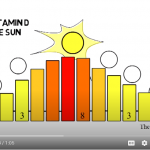 Making Vitamin D From the Sun
Making Vitamin D From the Sun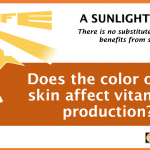 How does the color of the skin affect vitamin D production?
How does the color of the skin affect vitamin D production?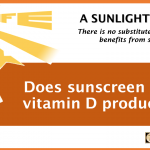 Does sunscreen block vitamin D production?
Does sunscreen block vitamin D production?